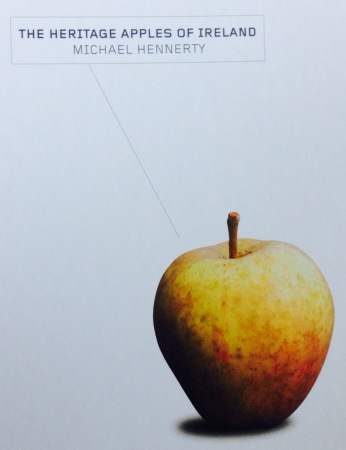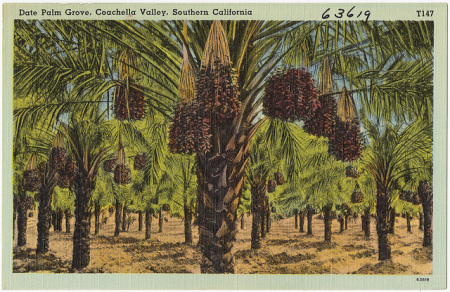- Culturally valuable minority crops provide a succession of floral resources for flower visitors in traditional orchard gardens. Proper gardens better for pollinators than unmanaged plots.
- Trends in access of plant biodiversity data revealed by Google Analytics. No impact of social media on the use of plant data, and the future is mobiles.
- Worldwide Genetic Diversity for Mineral Element Concentrations in Rice Grain. Most, though not all, elements showed high heritability, which is good news for breeders.
- Agriculture facilitated permanent human occupation of the Tibetan Plateau after 3600 BP. No barley, no Tibetans.
- Seed fates in crop-wild hybrid sunflowers: crop allele and maternal effects. Having wild mothers helps wild-crop hybrids survive in the wild.
- Coconut (Cocos nucifera l.) pollen cryopreservation. Eureka!
- The evolution of seed dormancy: environmental cues, evolutionary hubs, and diversification of the seed plants. More dormancy, more speciation.
- The evolutionary ecology of C4 plants. C4 opens new niches, but it’s all a matter of contingency and you have to follow the whole evolutionary history of a group to understand its current ecological strategy.
- A Minor Role for Environmental Adaptation in Local–Scale Maize Landrace Distribution: Results from a Common Garden Experiment in Oaxaca, Mexico. It’s the social factors, stupid.
- Crop immunity against viruses: outcomes and future challenges. PAMP (pathogen-associated molecular patterns)-triggered immunity (PTI) may be the future.
Irish eyes smiling about apple conservation
 Our office complimentary copy of Michael Hennerty’s The Heritage Apples Of Ireland has arrived, and it’s a real beauty. We somehow missed the announcement of its publication back in the summer.
Our office complimentary copy of Michael Hennerty’s The Heritage Apples Of Ireland has arrived, and it’s a real beauty. We somehow missed the announcement of its publication back in the summer.
The book is written by Dr. Michael Hennerty, who for many years was Head of the Department of Horticulture in University College Dublin, and provides detailed genetic information of 68 different varieties of indigenous Irish apples using high resolution photographs. The descriptors used in the book utilise the current internationally recognised descriptor system and a key is also included to facilitate the identification of historical Irish cultivars by non-experts.
I particularly like the section on “finders and keepers”, people who have been involved in the conservation of Irish apples over the years. People like John George Dalkeith Lamb, who…
…collected old apples from 1945 to 1949 and established the UCD collection. Prof. E.J. Clarke maintained the collection until it was destroyed in 1970. Repatriated in 1996. Now planted at UCD, Belfield, Dublin.
That “repatriated” is intriguing, but I can find no further explanation of it online. Anyone out there know the details?
Brainfood: Daniel Zohary, Blue dates, Crop diversification, Tunisian oases, Cranberry diversity, Drought breeding, Seed-use watermelon, Cattle history, Apple conservation
- Daniel Zohary: Geneticist and Explorer of Plant Domestication. Nice profile of iconic explorer of agricultural biodiversity.
- The date palm with blue dates Phoenix senegalensis André (Arecaceae): A horticultural enigma is solved. A variety of P. canariensis, as it turns out.
- Crop diversification as a smallholder livelihood strategy within semi-arid agricultural systems near Mount Kenya. It will work better at higher elevations.
- Change of oases farming systems and their effects on vegetable species diversity: Case of oasian agro-systems of Nefzaoua (South of Tunisia). Not working at all in oases.
- Clonal diversity and genetic differentiation revealed by SSR markers in wild Vaccinium macrocarpon and Vaccinium oxycoccos. Cranberries have much more variation than previously thought.
- Two decades of InterDrought conferences: are we bridging the genotype-to-phenotype gap? Yes, slowly, but genomics will help. Eventually.
- Microsatellite Marker-based Genetic Diversity of Seed-use Watermelon (Citrullus lanatus ssp. vulgaris var. megalaspermus Lin et Chao) Collections. They’re all very similar.
- On the History of Cattle Genetic Resources. The loss of breeds adapted to local conditions and extensive management are the main threats to the genetic diversity amassed over the past 12,000 years.
- The vulnerability of US apple (Malus) genetic resources. Could be worse. Could be better.
A meaningful date
There is a wonderful piece by the Kitchen Sisters on US National Public Radio about the history of dates in California — and about plant exploration, politics, and people.

There are about 3400 ha of date palm in the Coachella Valley, a Southern California desert. Here is a road side view (note how you can you can estimate the growth rate by comparing with the 2007 street view photo) and here is another grove. Wikipedia says that that the Spanish introduced the date palm to lower California (Mexico) in 1765; but Walter Swingle gets the credit for bringing the plant to the USA (see this letter by David Fairchild). In 1903 he collected Deglet Noor in Biskra, Algeria, and in 1929 he collected the prized cultivar Medjool in Morocco.
Coachella date grower Patricia Laughlin has this to say about that:
When the Medjool dates came in, there were only nine offshoots that all of the present trees come from. These medjools came from the oasis of Bou Denib. It’s been wiped out by a disease in Algeria and Morocco. We have sent back good plant stock to return to those areas from which they originated. My husband and I visited. It’s over the Atlas Mountains from Marrakech — out really in the desert. When we got to Bou Denib, the mayor came out to greet us. It was a big occasion. And he said why would anyone from the United States want to come to Bou Denib? We had worked with the Medjool dates for so many years and to see where they originated was very meaningful for us.
Nibbles: R&D, Cheese double, Cali candied yams, Sustainable joe, Soy & deforestation, Cereals in Sudan, Big Ag, History of breeding
- ASTI says agricultural research investment in Africa is bearing fruit and needs to double.
- There’s a cheese revolution going on in America’s heartland.
- Meanwhile, the UK is worried about fake goat cheese.
- “Apparently, Californians like well-tanned sweetpotatoes.” Well of course they do.
- Good coffee AND conservation? I’ll take it.
- Soy AND conservation in Brazil? Well, not quite, but good news nonetheless.
- Cereal cultivation in Sudan pushed back several hundred years.
- What are the conditions for success in large-scale agricultural initiatives? You tell them.
- The history of crop improvement 101.